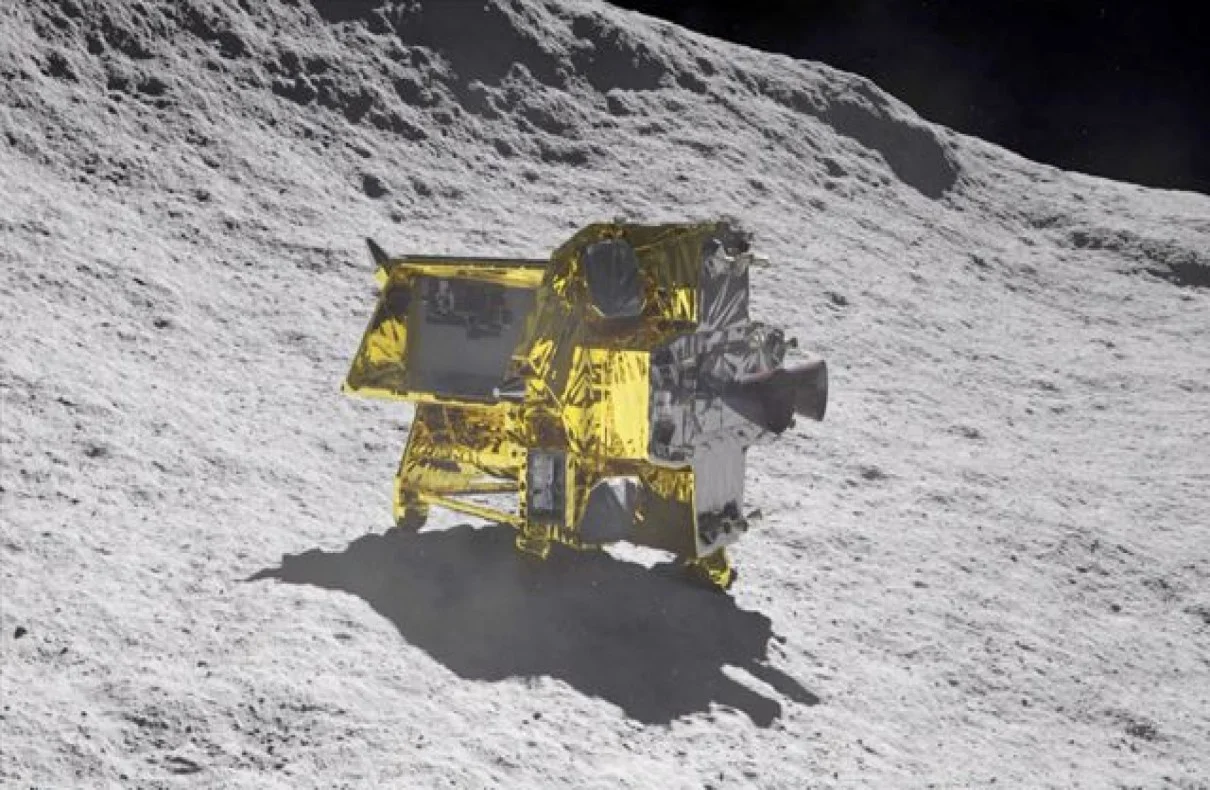
Japan has become the fifth country in the world to successfully land a spacecraft on the Moon. The Smart Lander for Investigating Moon (SLIM), also known as “Moon Sniper,” executed a precision landing closer to its intended target than any previous mission. With the goal of studying the Moon’s surface and conducting groundbreaking scientific research, SLIM embarked on its journey from the Tanegashima Space Centre and touched down near the Shioli crater, south of the lunar equator.
The primary objective of the SLIM mission was to achieve an unparalleled level of accuracy in lunar landing. Previous missions had recorded landing ranges of only a few to dozens of kilometers, whereas SLIM aimed to touch down with a precision of 100 meters. Equipped with vision-based navigation technology, the spacecraft was designed to capture images of the Moon’s surface as it approached, allowing it to quickly match these images with onboard maps and accurately locate its target landing site. This innovative approach represents a significant leap forward in lunar landing capabilities.
Europa: A Moon of Jupiter and Its Potential Habitability
SLIM’s landing procedure was unlike that of previous Moon landers. Instead of using four legs to simultaneously reach a relatively flat area, SLIM was designed to execute a two-step landing on a 15-degree slope outside the Shioli crater. It would first touch down with one leg at the back, and then tip forward to stabilize on the four front legs. However, observations suggest that SLIM might have rolled during its touchdown, preventing its solar cells from facing the Sun. As a result, the solar cells were unable to generate electricity, and the spacecraft is currently operating solely on its battery power.
The power failure presents a significant challenge to the survival of SLIM on the lunar surface. Telemetry data indicates that the spacecraft’s battery will last only a few more hours, which represents the remaining lifespan of SLIM. However, there is still a glimmer of hope. If sunlight is able to reach the solar cells, there is a chance that SLIM could come back to life. The Japan Aerospace Exploration Agency (JAXA) continues to monitor the lander, eagerly awaiting any signs of reactivation.
If SLIM can be revived, its scientific instruments hold great potential for groundbreaking discoveries. One of the key objectives of the mission is to search for a mineral called olivine in the Moon’s mantle. By detecting and analyzing the components of olivine and comparing them with their counterparts on Earth, scientists hope to gather new evidence supporting the theory that the Moon was once part of the Earth. This finding would have profound implications for our understanding of the Moon’s origin and its relationship with our planet.
Additionally, SLIM’s specialized camera, the only scientific instrument onboard, could shed light on the origin of the Apollo 16 Moon samples. The landing site is located near Mare Nectaris, an ancient lunar sea, and close to the previous Apollo mission’s landing site. By confirming the source of the Apollo 16 samples, SLIM could provide valuable insights into impact dynamics, the chemistry of the ancient sea, and the geological history of the Moon.
Japan’s successful Moon landing is a significant achievement, not only for the country but also for the entire Asian region. With this accomplishment, Japan joins China and India as the only countries in the past decade to soft-land spacecraft on the Moon. Namrata Goswami, a space policy researcher at Arizona State University, emphasizes the importance of this achievement, highlighting that it is “a big win for Asia.” The successful landing positions Japan as a key player in the international space race and sets the stage for future collaborations and contributions to lunar exploration.
JAXA’s ambitious mission aligns with the global efforts to return humans to the Moon. The United States-led Artemis Program, which aims to achieve this goal within the next three years, presents an opportunity for Japanese technology to make a significant contribution. The precision landing technology demonstrated by SLIM holds promise for future missions and serves as a potential Japanese contribution to international cooperation. As Japan continues to develop its space capabilities, collaborations between nations in the Asia-Pacific region may intensify, setting the stage for a competition in lunar exploration.
SpaceX and NASA Gear Up for Weather-Delayed Crew-8 Launch
The journey to the Moon is not without its challenges. Moon landings have historically proven to be incredibly difficult, with only about half of all attempts succeeding. Just weeks before Japan’s successful landing, a commercial American spacecraft encountered a propellant problem that prevented it from landing as planned. This serves as a reminder of the technical hurdles and complexities involved in lunar missions. However, failures also provide valuable lessons and opportunities for improvement, ultimately leading to greater success in future endeavors.
In recent months, the Moon has witnessed an increase in visitors and missions from various countries and commercial entities. SLIM’s landing marked the second Moon landing attempt this year, following the ill-fated US Peregrine spacecraft. In the coming months, the United States and China are set to launch their own lunar missions, with the goal of returning samples from the Moon’s far side and searching for frozen water. The renewed interest in lunar exploration reflects humanity’s enduring fascination with our celestial neighbor and the potential scientific discoveries that await us.
